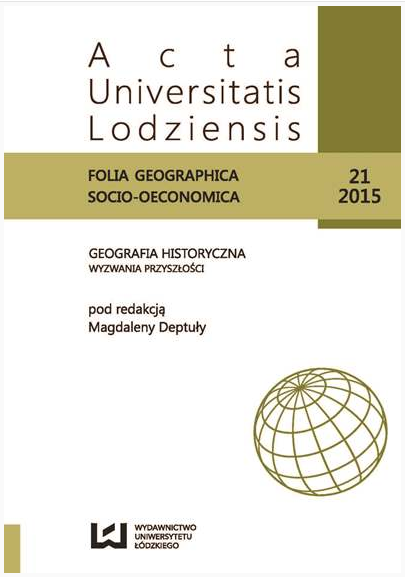Przestrzenne zróżnicowanie wyników wyborów do Sejmu z 1957 roku
Spatial differentiation of results of the Polish parliamentary elections 1957
Author(s): Mariusz KowalskiSubject(s): Geography, Regional studies, Human Geography, Regional Geography, Historical Geography
Published by: Wydawnictwo Uniwersytetu Łódzkiego
Keywords: election 1957; the spatial diversity; sustainability of electoral behavior; Polish United Workers Party; constituencies
Summary/Abstract: When comparing the spatial differentiation of results of elections from theinter-war period (1918–1939) and the post-communist period (1989–2015), one seesa very clear similarity between the two (Kowalski, 2014). In the north-western part ofthe country the electoral preferences are with the left or the liberals, while in the south--eastern part – with the right.Given the persistence of this spatial setting, a supposition arises that the spatialdifferentiation of the political attitudes existed also during the times of the socialistPeople’s Poland. Lack of political freedom and electoral falsifications, performed by thecommunists, make the verification of this proposition quite difficult. Of the elections,organised in the socialist period, it is the ones, carried out in 1957, that deserveconsideration, first of all. These elections were carried out in the short period ofliberalisation after 1956, in conditions of an enthusiastic support for the new governingadministration. The organisers of the elections could be fairly certain as to the outcome.That is why, side by side with the candidates, who were closely connected with theruling establishment, also more independent persons, frequently enjoying highpopularity in the society, were allowed to stand as candidates in these elections. In orderto guarantee the victorious outcome, the authorities allowed for the formation of justa single list of candidates. The authorities lanced the appeal to vote for the candidatesfrom the first places on the list, since it was on these places that the persons mostconvenient from the point of view of the establishment were listed. The few independentcandidates were located at far-off positions. There was also an appeal for the possiblyhighest turnout at the elections, since this would constitute a signal of support for thenew administration. These appeals were also shared by the Catholic Church in Poland.Despite the limitations and constraints mentioned, the relatively liberal atmospherewas conducive to the electoral competition within the framework of the candidate listsapproved. This was yet enhanced by the fact that candidates represented, formally atleast, various political organisms (communists, peasant activists, democratic party, non--aligned candidates) and communities, and, as indicated, the lists also included, eventhough on far-off places, persons of independent orientations. In addition, the liberalatmosphere and the conviction of the ruling group that they must win, limited, it appears,the electoral falsifications to the minimum.Owing to the advantageous social atmosphere and the appropriate construction of thelists of candidates, the communists could not lose these elections. Yet, in spite of this,the official results of the elections made visible the significant differentiation of thePolish society, both in global terms, and in space. The latter aspect represented a clearsimilarity to the spatial differentiation of the results of elections, taking place in othertime periods, both the earlier ones (the interwar period) and those carried out later (after1989).
Journal: Acta Universitatis Lodziensis. Folia Geographica Socio-Oeconomica
- Issue Year: 21/2015
- Issue No: 3
- Page Range: 73-84
- Page Count: 12
- Language: Polish

